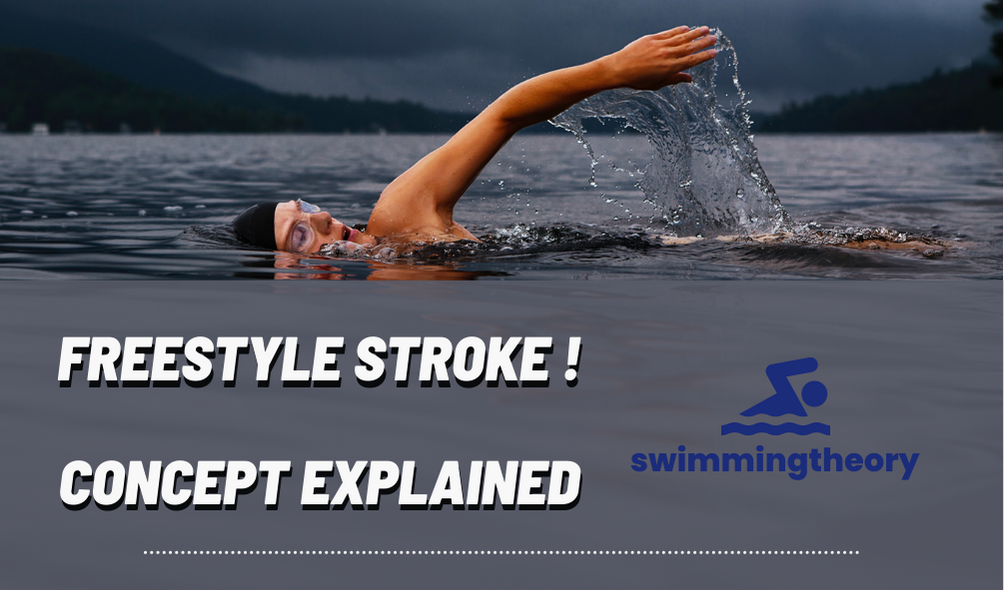Today, we’re exploring the challenging backstroke. By the end of this blog, you will become an expert in the basics of backstroke, and understand why it is a great choice for beginners.
A Guide to Backstroke for Beginners
We’ll throw in some expert tips and a step-by-step guide to backstroke for beginners to ensure you swim like a pro in no time.
So, put on your swim cap and grab your goggles because we’re about to make a splash with the nearest swimming pool.
Table of Contents – Backstroke for Beginners
What is a backstroke in swimming?
Backstroke swimming is a technique where the swimmer lies on their back and performs alternating arm and leg movements.
The arms move in a circular motion and the legs execute an alternating flutter kick.
It is generally considered slower than freestyle and butterfly strokes but faster than breaststroke.
But, what is elementary backstroke?

Backstroke vs Elementary Backstroke: A Comparison
Backstroke and elementary backstroke are two different swimming strokes, although they may look similar at first glance.
| Arm Movement | Leg Movement | Breathing | Speed | |
|---|---|---|---|---|
| Backstroke | Continuous circular motion | Alternating flutter kick | Rotates head to one side | Faster |
| Elementary Backstroke | Straight line from hips to chest | Legs move together in a sweeping motion | Lifts head and chin out of the water | Slower |
We hope that the differences are now clear to you.
Read about other Strokes – Butterfly
Here comes your next question. How difficult is it to learn the backstroke?
The challenges of backstroke: why is it so hard?
Learning this technique can be a challenging experience, especially for beginners.
These are the factors to consider:
- Limited visibility due to lying on the back
- Coordination of arms and legs required in continuous and alternating motion
- Breathing can disrupt body position and rhythm
- Maintaining proper body position requires strong core muscles and good body awareness
- It is physically demanding and can cause fatigue
- Practice and proper technique can make it easier and more comfortable.
Now that you know backstroke is considered the hardest stroke, you may be wondering if it’s still a good choice for beginners.
Why backstroke for beginners is a great choice: 3 reasons
Backstroke can be a good swimming stroke for beginners for several reasons.
First, Swimmer’s face is above water level, facilitating breathing and visibility.
Second, Comfortable body position for unsure beginners
Third, Backstroke aids beginners’ body coordination and core/leg muscle strength building.
Let’s examine the techniques used in backstroke for beginners swimming more closely.
Read about other Strokes – Breaststroke
4 Techniques to Improve Your Backstroke Swimming Performance
Backstroke swimming movement techniques can be used to improve your performance in the pool.
To execute it properly, you must master the following techniques.
Arm Movement
Arms move in a continuous circular motion.
Enter water pinky finger first, sweep towards hips.
Pull hands back towards the body, and keep elbows straight.
Leg Movement
Legs move in alternating motion with toes pointed and knees slightly bent.
Feet should stay close to the water surface to minimize splashing.
Breathing
Swimmer breathes by rotating their head to one side while another arm is in the water.
Rotate your head enough to allow your mouth and nose to clear water.
A quick tip: Don’t let your rotation compromise your body position.
Body Position
Throughout the backstroke swimming stroke, maintain a stable body position.
Keep your hips and shoulders close to the surface of the water to reduce drag and swim faster.
We understand that simply reading about backstroke swimming techniques may not make you a pro.
That’s why we’ve created a step-by-step tutorial with pictures to help you learn how to swim backstroke.
8 Steps with Pictures – How to swim backstroke?
Just follow these 8 super easy steps, and you’ll be master it in no time!
Step 1
To start backstroke swimming, lie on your back and keep your body straight.
Step 2
Move your arms in a circular motion while keeping them straight and close to your ears.
Step 3
Move your legs in a flutter kick motion alternating between them.
Step 4
To reduce resistance in the water, it’s important to keep your hips and shoulders close to the surface.
Step 5
Turn your head to the side opposite the arm that is underwater to breath while swimming.
This allows you to clear your mouth and nose without changing your body position.
Step 6
You need to move your arms in a circular motion while kicking your legs.
This movement propels you forward through the water.
Step 7
Now you started swimming. The next thing you need to do is to maintain stability. How do you do that?
Just keep your core muscles engaged.
Step 8
And finally, when you are confident enough, increase your speed by maintaining proper body position.
6 Backstroke Swimming Benefits
Low-impact exercise: Joint-friendly, suitable for those with injuries or chronic pain.
Improves posture: Strengthens the muscles in the back and neck.
Full-body workout: Engages the muscles in the arms, legs, core, and back.
Cardiovascular health: Improve heart health and lung capacity.
Improves flexibility: Backstroke improves flexibility with shoulder and hip movements.
Mental benefits: Stress relief and relaxation.
Finally, are you Feeling Confident?
You are now loaded with tips and techniques to do backstroke for beginners swimming like a pro.
Hopefully, you feel more confident. At the same time, never forget to practice regularly to improve your backstroke technique.
Consistent practice will help you build the necessary muscle memory and improve your endurance in the water.
Remember to also focus on maintaining proper body position and minimizing drag to improve your speed and efficiency in the water.


